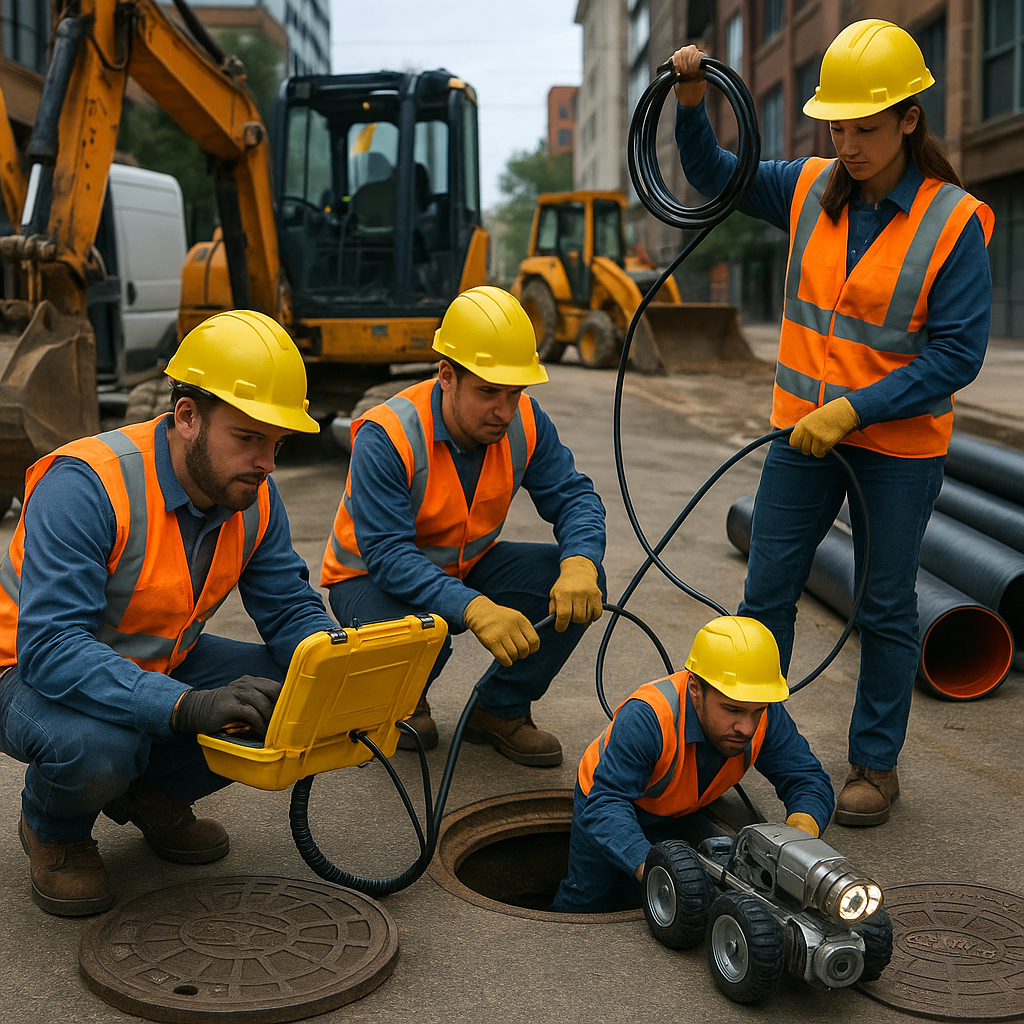Advancements in Drain Inspection Equipment for 2024
Explore the latest in drain inspection equipment: robotics, AI, and high-res imaging for smarter, safer sewer management.

Advancements in Drain Inspection Equipment for 2024
Introduction
The drain inspection equipment industry is experiencing a technological revolution in 2024, driven by significant advancements in robotics, AI, high-resolution imaging, and enhanced safety protocols. These innovations are transforming the way sewer inspections are conducted, offering unprecedented precision, efficiency, and safety.
New Technologies and Equipment
Robotics and Autonomous Crawler Systems
Robotics and autonomous crawler systems have become essential tools in modern sewer inspections. These devices improve mobility and access within sewer pipes, allowing for thorough inspections without the need for human entry into potentially hazardous environments. Key features include:
- High-definition and 4K Cameras: Enhanced pan-and-tilt capabilities provide detailed visuals of pipe conditions.
- AI-powered Software: Automates defect detection in real-time, identifying cracks, corrosion, and blockages with improved accuracy.
- Lateral-launch Crawlers: Increase flexibility and ease of access to lateral connections.
- Wireless, Battery-powered Systems: Offer portability and ease of use, especially in hard-to-reach areas.
Enhanced Imaging and AI Integration
The integration of high-resolution imaging and AI has revolutionized defect detection and assessment. These technologies enable:
- Real-time Analysis: AI algorithms process video feeds to detect anomalies and assess pipe conditions immediately.
- Predictive Maintenance: AI-driven insights help schedule maintenance proactively, reducing emergency repairs and extending asset life.
Industry Regulations and Standards
Open Data Standards
To ensure interoperability between various software platforms and agencies, the industry is moving towards open data standards. This shift facilitates seamless data sharing and enhances collaborative efforts across utilities.
Predictive Rehabilitation Planning Models
Predictive rehabilitation planning models are being adopted to optimize lifecycle costs and maintenance schedules. National benchmarking dashboards aggregate asset health data, allowing utilities to compare performance regionally and nationally.
Market Trends and Business Opportunities
The sewer cameras market is poised for growth, projected to expand from USD 389 million in 2024 to over USD 600 million by 2032. Key market drivers include:
- AI and Machine Learning: These technologies enable predictive maintenance, reducing unnecessary repairs and enhancing efficiency.
- Wireless and Portable Systems: Gaining popularity for residential and hard-to-reach applications, offering new business opportunities for service providers.
Safety Protocols and Best Practices
Remote Inspection Technologies
Remote inspection technologies significantly reduce the risks associated with traditional sewer inspections. Benefits include:
- Reduced Hazard Exposure: Minimizes the need for workers to enter hazardous environments, lowering the risk of exposure to toxic gases, confined spaces, and falls.
- Portable Gas Detectors: Enhance hazard detection before entry.
- Real-time Video Feeds: Provide immediate situational awareness and improve safety compliance.
Recent Case Studies and Success Stories
Leading companies such as RIDGID, CUES, and Envirosight have unveiled new products featuring advanced imaging and robotic capabilities. These innovations have been highlighted at industry events like WWETT Expo 2025, showcasing:
- Improved Inspection Range: Enhanced mobility and access to various pipe sections.
- Image Clarity: Superior visual data for accurate assessments.
- Operational Efficiency: Streamlined processes and reduced inspection times.
Cost and Pricing Information
While pricing varies based on equipment type and features, technological advancements and increased demand are driving competitive pricing trends. The integration of AI and robotics is expected to reduce long-term operational costs by enabling predictive maintenance and minimizing emergency repairs.
Conclusion
The drain inspection equipment industry in 2024 is marked by smarter, safer, and more efficient technologies that leverage AI, robotics, and high-resolution imaging. These advancements support better decision-making, cost savings, and environmental protection, positioning the industry for sustained growth and innovation.
Practical Tips and Actionable Advice
- Invest in AI-driven Equipment: To benefit from predictive maintenance and reduce long-term costs.
- Adopt Open Data Standards: For seamless integration and collaboration with industry partners.
- Prioritize Safety: Utilize remote technologies and real-time monitoring to enhance worker safety.